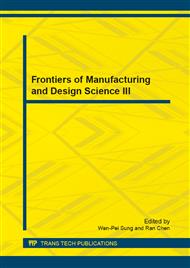p.102
p.107
p.112
p.116
p.121
p.126
p.131
p.136
p.141
Calculation and Analysis of the Thermophysical Parameters of Micro-Emulsified Ethanol-Diesel Blended Fuel
Abstract:
The micro-emulsified ethanol-diesel blended fuel is an ideal alternative oxygenous fuel for diesel engines due to its physical and chemical properties and excellent combustion characteristics. Fueled with this fuel, a diesel engine can give off remarkably lower harmful emissions,especially particulate. It is necessary to take into account instantaneous variations of the thermophysical parameters of blended fuels with temperature and pressure. For these reasons, this paper use the empirical formulas calculates the thermophysical parameters of this blended fuel,including the specific heat capacity, viscosity, thermal conductivity and diffusion coefficient. And the effects of the temperature, pressure and ethanol content on the initial blended fuel’s condition are investigated. The results show that the addition of some ethanol to the diesel oil can contribute to the evaporation of the micro-emulsified ethanol-diesel blended fuel, and these empirical formulas are able to be employed to calculate the thermophysical parameters of this blended fuel.
Info:
Periodical:
Pages:
121-125
Citation:
Online since:
December 2012
Authors:
Price:
Сopyright:
© 2013 Trans Tech Publications Ltd. All Rights Reserved
Share:
Citation:


